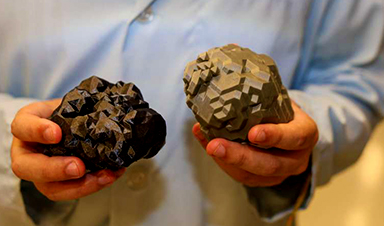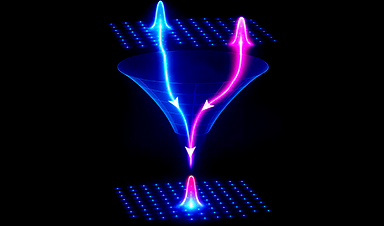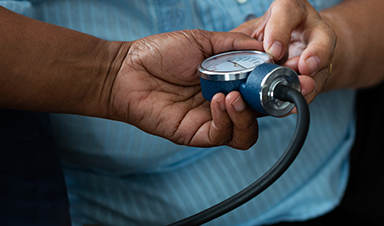The innovative realm of cosmetic science has recently spotlighted lignin nanoparticles (LNPs) for their exceptional potential in fortifying sun protection measures within skincare products. These nanoparticles are celebrated for their superior ability to block harmful UV rays, a critical feature that outshines the capabilities of their soluble counterparts, the lignin oligomers.
Despite these promising attributes, the intricate relationship between the chemical makeup of these LNPs and their particle size distribution remains a subject of ongoing research. A notable challenge in this field has been the reliance on technical lignin as a primary source material, which undergoes significant structural alterations during extraction, thus complicating the study of its inherent UV-blocking properties.
In a significant stride towards demystifying these complexities, a team of Chinese researchers embarked on a comprehensive study, the findings of which were documented in the esteemed journal Carbon Resources Conversion. This research initiative delved into the interplay between the chemical constitution and particle size distribution of LNPs, aiming to unravel the factors that govern their efficacy in amplifying sunscreens’ sun protection factor (SPF).
Zhicheng Jiang, a co-corresponding author and a distinguished member of the College of Biomass Science and Engineering at Sichuan University, shed light on the transformative potential of LNPs when engineered into nanoparticles. He elucidated, “Upon preparation into nanoparticles, lignin can synergistically enhance the UV shielding effect of composite materials when combined with other anti-UV agents, such as commercial sunscreens.”
Jiang further expounded on the complexities of optimising the UV-blocking prowess of LNPs within sunscreen formulations. He emphasised that the task is far from simple, as it necessitates a nuanced understanding of various parameters, including the LNPs’ structure, size, and concentration, which collectively influence the performance of the sunscreen post the incorporation of LNPs.
The research unveiled that LNPs characterised by dense structures featuring conjugating C=O and β-O-4 linkages along with a syringyl unit enriched with methoxyl groups significantly bolstered the UV resistance of sunscreen formulations. Jiang revealed a fascinating aspect of the LNPs’ behaviour when mixed in sunscreens, stating, “In sunscreen formulations, the simultaneous inclusion of large and small LNPs results in a state of disorder, which allows some particles to fill the gaps between them and adjacent particles, leading to a more compact LNP shield.” This intricate interplay, he noted, markedly elevates the UV-blocking efficiency of the mixture, surpassing that of formulations with uniformly sized LNPs at equivalent concentrations.
Tianyu Liang, the study’s lead author, reflected on the past challenges and the breakthroughs achieved through this research. He remarked, “In the past, exploring the UV shielding mechanism of LNPs and consciously regulating them was a daunting task.” Liang’s statement underscores the groundbreaking nature of their findings, which pave the way for tailored strategies to enhance the UV protection capabilities of LNPs, whether through chemical modifications or adjustments in particle size distribution.
The study highlights the technical advancements in the field and underscores the potential of LNPs as a sustainable, nature-derived solution for UV protection in sunscreens and broader cosmetic applications. This research marks a significant milestone in the journey towards harnessing the full potential of lignin nanoparticles, promising a future where skincare products are more effective in protecting against the sun’s harmful rays and lean towards natural, environmentally friendly ingredients.
Author
Isabella Sterling
News
Can introducing peanuts early prevent allergies? Real-world data confirms it helps
New evidence from a large U.S. primary care network shows that early peanut introduction, endorsed in 2015 and 2017 guidelines, was followed by a marked decline in clinician-diagnosed peanut and overall food allergies among [...]
Nanoparticle blueprints reveal path to smarter medicines
Lipid nanoparticles (LNPs) are the delivery vehicles of modern medicine, carrying cancer drugs, gene therapies and vaccines into cells. Until recently, many scientists assumed that all LNPs followed more or less the same blueprint, [...]
How nanomedicine and AI are teaming up to tackle neurodegenerative diseases
When I first realized the scale of the challenge posed by neurodegenerative diseases, such as Alzheimer's, Parkinson's disease and amyotrophic lateral sclerosis (ALS), I felt simultaneously humbled and motivated. These disorders are not caused [...]
Self-Organizing Light Could Transform Computing and Communications
USC engineers have demonstrated a new kind of optical device that lets light organize its own route using the principles of thermodynamics. Instead of relying on switches or digital control, the light finds its own [...]
Groundbreaking New Way of Measuring Blood Pressure Could Save Thousands of Lives
A new method that improves the accuracy of interpreting blood pressure measurements taken at the ankle could be vital for individuals who are unable to have their blood pressure measured on the arm. A newly developed [...]
Scientist tackles key roadblock for AI in drug discovery
The drug development pipeline is a costly and lengthy process. Identifying high-quality "hit" compounds—those with high potency, selectivity, and favorable metabolic properties—at the earliest stages is important for reducing cost and accelerating the path [...]
Nanoplastics with environmental coatings can sneak past the skin’s defenses
Plastic is ubiquitous in the modern world, and it's notorious for taking a long time to completely break down in the environment - if it ever does. But even without breaking down completely, plastic [...]
Chernobyl scientists discover black fungus feeding on deadly radiation
It looks pretty sinister, but it might actually be incredibly helpful When reactor number four in Chernobyl exploded, it triggered the worst nuclear disaster in history, one which the surrounding area still has not [...]
Long COVID Is Taking A Silent Toll On Mental Health, Here’s What Experts Say
Months after recovering from COVID-19, many people continue to feel unwell. They speak of exhaustion that doesn’t fade, difficulty breathing, or an unsettling mental haze. What’s becoming increasingly clear is that recovery from the [...]
Study Delivers Cancer Drugs Directly to the Tumor Nucleus
A new peptide-based nanotube treatment sneaks chemo into drug-resistant cancer cells, providing a unique workaround to one of oncology’s toughest hurdles. CiQUS researchers have developed a novel molecular strategy that allows a chemotherapy drug to [...]
Scientists Begin $14.2 Million Project To Decode the Body’s “Hidden Sixth Sense”
An NIH-supported initiative seeks to unravel how the nervous system tracks and regulates the body’s internal organs. How does your brain recognize when it’s time to take a breath, when your blood pressure has [...]
Scientists Discover a New Form of Ice That Shouldn’t Exist
Researchers at the European XFEL and DESY are investigating unusual forms of ice that can exist at room temperature when subjected to extreme pressure. Ice comes in many forms, even when made of nothing but water [...]
Nobel-winning, tiny ‘sponge crystals’ with an astonishing amount of inner space
The 2025 Nobel Prize in chemistry was awarded to Richard Robson, Susumu Kitagawa and Omar Yaghi on Oct. 8, 2025, for the development of metal-organic frameworks, or MOFs, which are tunable crystal structures with extremely [...]
Harnessing Green-Synthesized Nanoparticles for Water Purification
A new review reveals how plant- and microbe-derived nanoparticles can power next-gen water disinfection, delivering cleaner, safer water without the environmental cost of traditional treatments. A recent review published in Nanomaterials highlights the potential of green-synthesized nanomaterials (GSNMs) in [...]
Brainstem damage found to be behind long-lasting effects of severe Covid-19
Damage to the brainstem - the brain's 'control center' - is behind long-lasting physical and psychiatric effects of severe Covid-19 infection, a study suggests. Using ultra-high-resolution scanners that can see the living brain in [...]
CT scan changes over one year predict outcomes in fibrotic lung disease
Researchers at National Jewish Health have shown that subtle increases in lung scarring, detected by an artificial intelligence-based tool on CT scans taken one year apart, are associated with disease progression and survival in [...]





















